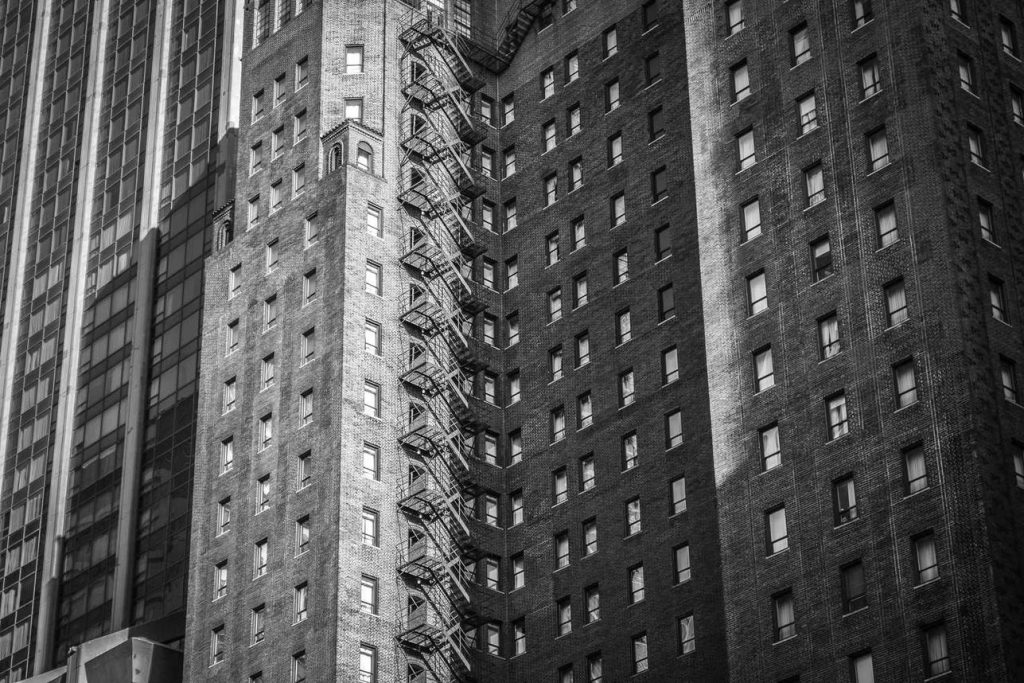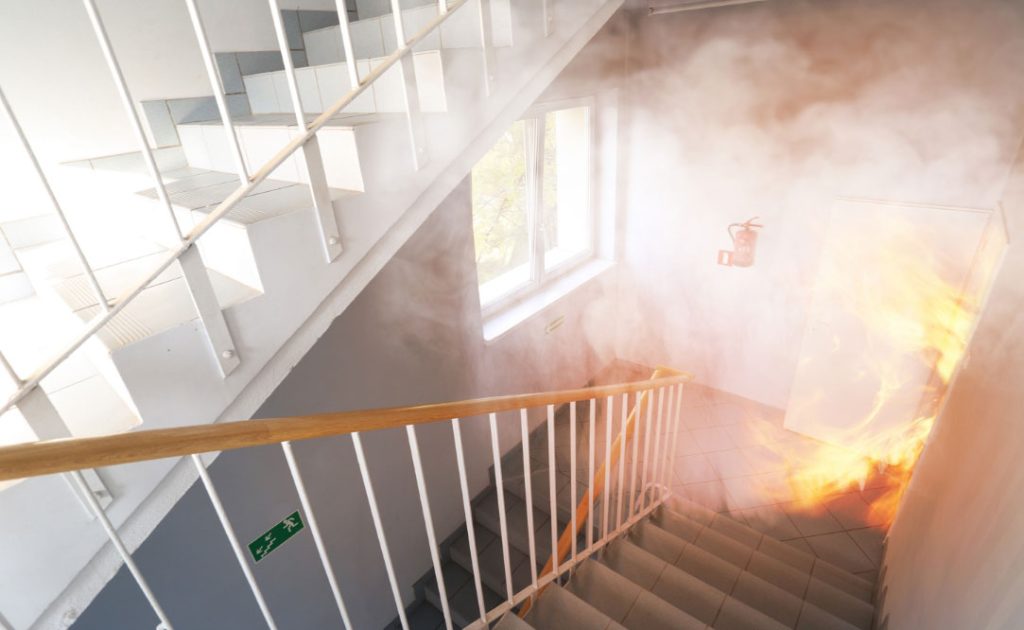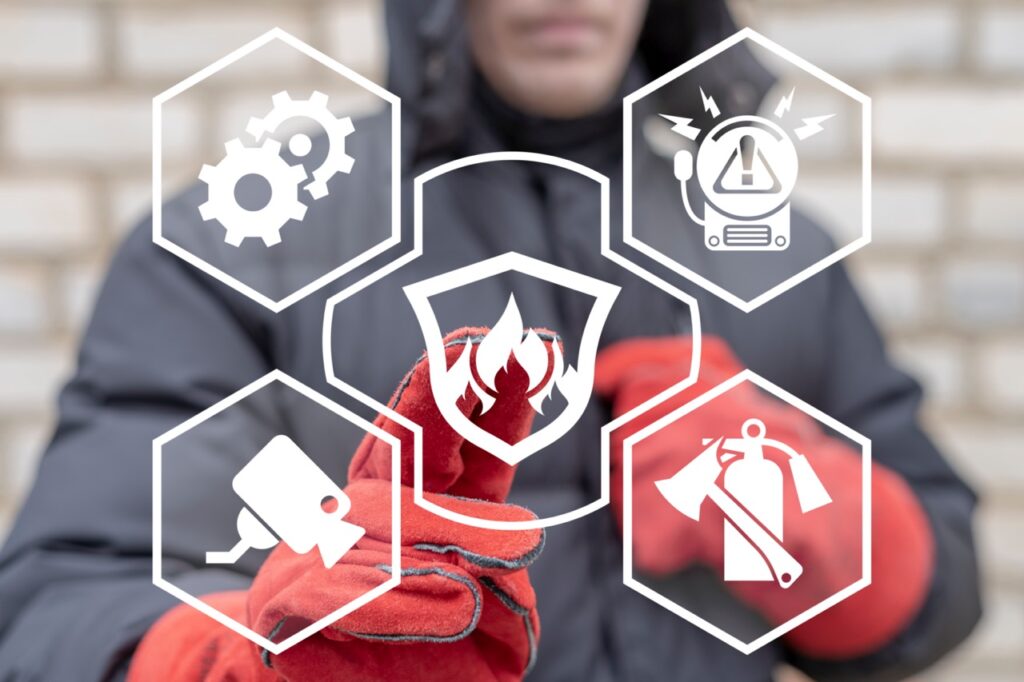What is Passive Fire Protection?

Understanding Passive Fire Protection
Fires can spread rapidly, causing devastating damage to buildings and putting lives at risk. Many businesses and commercial premises lack sufficient passive fire protection measures, leaving them vulnerable to fire hazards. Passive fire protection (PFP) is designed to contain fires, slow their spread, and protect escape routes, giving occupants more time to evacuate safely and minimising structural damage.
Unlike active fire protection, which includes fire alarms and sprinkler systems that require activation, passive fire protection is always in place, working as an integral part of the building’s structure. This guide explores the key elements of passive fire protection and how it enhances fire safety.
How Does Passive Fire Protection Work?
Passive fire protection is built into the fabric of a building, designed to contain fire and smoke without human intervention. It includes fire-resistant materials, compartmentation, and fire-stopping systems that prevent the spread of flames. These measures ensure compliance with UK fire safety regulations, including Approved Document B, BS 9999, and BS EN standards.
Key Benefits of Passive Fire Protection
- Limits fire spread, reducing damage to property.
- Protects escape routes to allow safe evacuation.
- Enhances structural integrity, preventing building collapse.
- Requires no activation, providing continuous fire resistance.
Key Components of Passive Fire Protection
1. Fire Compartmentation
Fire compartmentation is one of the most essential aspects of passive fire protection. Buildings are divided into fire-resistant sections, containing fire within designated compartments and preventing rapid spread.
This is achieved through:
- Fire-resistant walls, floors, and ceilings that create protective barriers.
- Fire doors that slow fire movement between compartments.
- Fire stopping materials that seal gaps and penetrations in walls and floors.
By implementing compartmentation, fire is contained, reducing risk and ensuring occupants have sufficient time to escape.
2. Fire Doors
Fire doors are critical safety features designed to contain fire and smoke while maintaining escape routes. They are tested to withstand fire for a specific time period, commonly:
- FD30 (30 minutes)
- FD60 (60 minutes)
- FD90 (90 minutes)
- FD120 (120 minutes)
Fire doors must be properly installed and maintained to function effectively in an emergency. This includes checking seals, hinges, and closing mechanisms to ensure compliance with BS 8214 and Approved Document B.
3. Penetration Seals
Plumbing, electrical wiring, and ductwork create potential weak points where fire can spread. Fire penetration seals are used to close these gaps, maintaining the integrity of fire compartments. Examples include:
- Fire-resistant sealants to block small openings.
- Intumescent collars and wraps that expand under heat to seal pipe penetrations.
- Fire-rated batts and compounds for sealing larger service openings.
4. Fire-Resistant Glazing & Coatings
Fire-resistant glass provides compartmentation while allowing visibility and light transmission. Types of fire-rated glazing include:
- Wire-reinforced glass that holds in place even when shattered.
- Ceramic glazing with exceptional fire resistance.
- Intumescent gel layers that expand when exposed to heat, increasing protection.
These glazing solutions comply with BS EN 13501-2 and are essential for fire doors, partitions, and escape routes.
5. Fire Dampers
Ventilation systems can allow fire and smoke to spread through ductwork, compromising compartmentation. Fire dampers are installed within ducts and activate when temperatures rise, automatically sealing off airways to contain the fire.
6. Stairwells & Escape Routes
Protected stairwells ensure safe evacuation for occupants and access for emergency services. Fire doors within stairwells typically offer higher fire ratings to maintain integrity during a fire emergency.
Essential Passive Fire Protection Products
- Fire-resisting doors and hardware
- Compartment walls and partitions
- Fire-resistant suspended ceilings
- Industrial fire shutters and curtains
- Cavity barriers & linear gap seals
- Pipe collars, wraps, and fire batts
- Reaction-to-fire coatings for structural protection
All fire protection measures should be installed by accredited professionals to ensure compliance with UK fire safety laws.
Why Passive Fire Protection is Essential
Many businesses overlook passive fire protection, assuming active systems such as alarms and sprinklers are sufficient. However, passive fire measures provide continuous protection, do not rely on activation, and prevent fire spread in case active systems fail.
Fires can ignite in minutes, with little warning. Properly installed passive fire protection measures save lives, reduce damage, and ensure legal compliance.
If you need to assess or improve the passive fire protection in your commercial premises, our experts at Overbrook can provide bespoke fire safety solutions tailored to your building’s needs.
Contact us today to ensure your building meets the highest fire safety standards.




